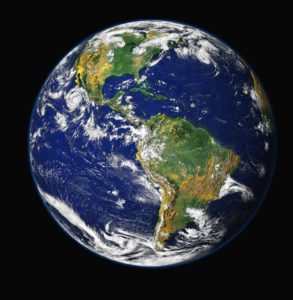 There has been a lot of discussion recently over whether or when the Atlantic Ocean current called Atlantic Meridional Overturning Current (AMOC) could collapse soon. The Gulf Stream is part of this current. This critically important current acts like a conveyor belt that brings warm water through the Atlantic Ocean up to the north Atlantic (Europe) and colder, saltier water down to the Southern Hemisphere.
There has been a lot of discussion recently over whether or when the Atlantic Ocean current called Atlantic Meridional Overturning Current (AMOC) could collapse soon. The Gulf Stream is part of this current. This critically important current acts like a conveyor belt that brings warm water through the Atlantic Ocean up to the north Atlantic (Europe) and colder, saltier water down to the Southern Hemisphere.
A new study predicts a collapse of the current happening soon - at some point between 2037 and 2064, but most likely before 2050. The current has been slowing down in recent years due to climate change, warming oceans, and the melting of glaciers and ice sheets.
The AMOC collapse would have devastating effects not just in Europe (it brings warm temperatures to Europe), but to the world. The AMOC keeps the Northern Hemisphere warm, the Southern Hemisphere from overheating, and distributes nutrients throughout the marine ecosystem.
One result: Arctic ice and cold would creep south in Europe and North America.
Excerpts from CNN: A critical system of Atlantic Ocean currents could collapse as early as the 2030s, new research suggests
A vital system of Atlantic Ocean currents that influences weather across the world could collapse as soon as the late 2030s, scientists have suggested in a new study — a planetary-scale disaster that would transform weather and climate.
Several studies in recent years have suggested the crucial system — the Atlantic Meridional Overturning Circulation, or AMOC — could be on course for collapse, weakened by warmer ocean temperatures and disrupted saltiness caused by human-induced climate change.
But the new research, which is being peer-reviewed and hasn’t yet been published in a journal, uses a state-of-the-art model to estimate when it could collapse, suggesting a shutdown could happen between 2037 and 2064.
This research suggests it’s more likely than not to collapse by 2050.
“This is really worrying,” said René van Westen, a marine and atmospheric researcher at the University of Utrecht in the Netherlands and study co-author.
“All the negative side effects of anthropogenic climate change, they will still continue to go on, like more heat waves, more droughts, more flooding,” he told CNN. “Then if you also have on top of that an AMOC collapse … the climate will become even more distorted.”
Like a conveyor belt, the AMOC pulls warm surface water from the southern hemisphere and the tropics and distributes it in the cold North Atlantic. The colder, saltier water then sinks and flows south. The mechanism keeps parts of the Southern Hemisphere from overheating and parts of the Northern Hemisphere from getting unbearably cold, while distributing nutrients that sustain life in marine ecosystems.
The impacts of an AMOC collapse would leave parts of the world unrecognizable.
In the decades after a collapse, Arctic ice would start creeping south, and after 100 years, would extend all the way down to the southern coast of England. Europe’s average temperature would plunge, as would North America’s – including parts of the US. The Amazon rainforest would see a complete reversal in its seasons; the current dry season would become the rainy months, and vice versa.
An AMOC collapse “is a really big danger that we should do everything we can to avoid,” said Stefan Rahmstorf, a physical oceanographer at Potsdam University in Germany who was not involved in the latest research.
